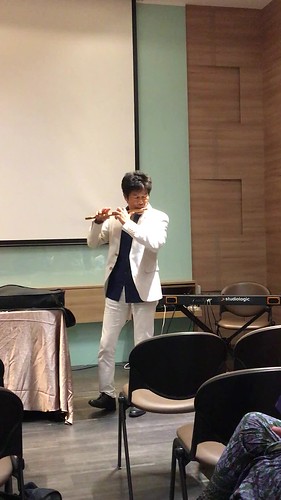
Took a break yesterday from practising the Shakuhachi 尺八 so my Xiao 箫 won’t go rusty (rather to prevent mould).
Putting the two side by side shows the contrast in appearance 小巫见大巫. Actually they each have their own “powers”; one can’t say the dragon is more superior to the phoenix.
The two instruments have a common history but naturally developed into a kind of Yin and Yang 太极生两仪 after the Tang dynasty. The Shakuhachi is like the majestic dragon that bursts into mighty leaps and wreaks stormy weather. It can be a tough ride on such a beast, needing stability and strength. When it’s rested there’s still tension, a dormant energy 藏龙.
Shakuhachi and Xiao duet:
Technical notes: the Shakuhachi 尺八 referred to here is the traditional Japanese 5 holed bamboo instrument with a slanted cut at one end for blowing. There are actually variants of this in Chinese culture referring to the Southern Xiao 南箫 as 尺八 also. And to add confusion there are 6 and 8 holed Xiao using the same style of blowing edge as Shakuhachi. One way to look at an instrument is not to decouple it from its culture and history: the Shakuhachi includes the approach and nuances of playing, its notation system, it’s link to Zen practice, its relationships to other instruments such as koto, and the craftsmanship of making it.

